|
Today's World War Wednesday poster is one of the more whimsical food posters created during World War II. "Lick the Platter Clean, Don't Waste Food" features a tall, thin man and a short, stout woman showing a shining clean brass platter. They are both dressed in old-fashioned, even Medieval-looking clothing, as befitting fairy tale characters. Of course, they are Jack Sprat and his wife, from the famous nursery rhyme: "Jack Sprat could eat no fat, his wife could eat no lean, but between the two of them, they licked the platter clean." The fairytale cartoon style is distinctive to artist Vernon Grant, who is probably best known for creating the original "Snap, Crackle, and Pop" characters for Rice Krispies cereal in 1933. The use of cartoons during the Second World War to promote propaganda ideals was not uncommon, and even Walt Disney and his animators got involved. Like hearkening back to the patriotism of the American Revolution, the use of fairy tales and other common childhood references were a clever way to remind people of pre-existing frames of reference for the behavioral changes the government was requesting of everyone. The message, of course, was a frequent one, although more often directed at soldiers and seamen than ordinary Americans, for whom the focus was more on food storage and cooking than eating. But the idea of not wasting food you took remains even today, when parents exhort their children to clean their plates. Did you grow up with the Jack Sprat rhyme? Were you told to clean your plate growing up? Let us know in the comments! The Food Historian blog is supported by patrons on Patreon! Patrons help keep blog posts like this one free and available to the public. Join us for awesome members-only content like free digitized cookbooks from my personal collection, e-newsletter, and even snail mail from time to time!
0 Comments
It's been cold and snowy lately here in the northeast, and sometimes you just have to have soup. But going to the grocery store in a snowstorm is ill-advised. This recipe lets you use up all kinds of bits and ends that might be languishing in your refrigerator.
This particular recipe is my own creation, based on what was in my kitchen, but is entirely inspired by history. Several parts of history, in fact. The first is reducing food waste. Historical peoples did not throw out potatoes just because they were starting to sprout, or lettuce because it was a bit wilted, and neither should you. Putting lettuce in soup is also extraordinarily historic, and a practice that should be revived. Another is that this recipe is based on one of my favorites, "Green Onion Soup," from Rae Katherine Eighmey's Hearts & Homes: How Creative Cooks Fed the Soul and Spirit of America's Heartland, 1895-1939 (2002). Eighmey read hundreds of agricultural magazines and gleaned recipes and wisdom from the farm home sections. Found in the December 26, 1924 issue of Wallace's Farmer, Green Onion Soup is a unique recipe. A combination of simply green onions and potatoes, the soup is cooked in a small amount of water, and then partially mashed right in the pot without draining. Cream and milk are added to thin the soup and add richness. The soup is comforting and nourishing and retains all of the vitamins and minerals that might otherwise be lost by draining away the cooking water. Which brings me to the final inspiration - vitamin retention in the style of recipes from World War II. By cooking the vegetables in the water that becomes the broth, you lose far fewer nutrients and flavor. Plus, other aspects of the soup are also quite appropriate to WWII - it's meatless, in line with rationing, and makes good use of milk, a favorite 1940s ingredient. Creamy Kitchen Sink Soup Recipe
I had a number of foods that needed using up that made their way into this soup: a few red potatoes, a head of wilted red lettuce, the fresh bits of baby spinach out of a box that was on the verge of getting slimy, a whole celery root starting to go a bit soft, some garlic starting to go green in the middle, and the tail end of a gallon of milk. The only fresh addition was two bunches of green onions. You could modify it pretty much however you want - any kind of greens, any kind of onion, any kind of root vegetable.
4 red potatoes 2 bunches green onions (scallions) 1 celery root 3 cloves garlic 1 head red lettuce 1-2 cups baby spinach water salt pepper 1/2 cup half and half 1 cup buttermilk whole milk Scrub and dice the potatoes, cutting away any eyes or bad parts, but leave the skin on. Slice the green onions, white and green parts. Cut away the knobbly skin from the celery root, then cut into small dice. Mince the garlic, wash and chop the whole head of lettuce. Add it all, with the spinach to a large stock pot and add water not quite to cover. Add at least 1 teaspoon salt (I used wild garlic flavored crystal salt languishing in a drawer) and bring to a boil. Reduce heat and simmer hard until all vegetables are very tender and potatoes fall apart when pierced with a fork. Do not drain. Using a potato masher or sauce whisk, mash vegetables in the pot until blended with the water, leaving some chunks. Add a the half and half and buttermilk (or you could use part heavy cream, or leave out the buttermilk, or just use milk) then add milk to thin out the soup and to taste. Taste for salt and add more if necessary, along with pepper and whatever other herbs and spices you like. Serve nice and hot with buttered bread or toast. The buttermilk does add a nice, distinctive tang. If you don't have any, add a dollop of sour cream, or some plain yogurt, or a splash of lemon juice. You could make this vegan with plant-based milk and butter. For a different flavor, add whatever fresh herbs you have lying around - dill, parsley, basil, and cilantro would all be good here. Add vegetable broth and some lemon juice instead of milk for a bright, brothy soup instead of something creamy. Use sweet potatoes or squash and tomato broth with the greens. The possibilities are really endless.
If you'd like more interesting recipes, you can purchase Eighmey's book from Bookshop or Amazon - either way, if you do, your purchase will support The Food Historian!
The Food Historian blog is supported by patrons on Patreon! Patrons help keep blog posts like this one free and available to the public. Join us for awesome members-only content like free digitized cookbooks from my personal collection, e-newsletter, and even snail mail from time to time!
Many thanks to the Southeastern New York Library Resources Council for hosting my talk and for recording it! Much (but certainly not all!) of the research I've done for my book is presented in condensed form here. I think it turned out very nicely indeed and I am now contemplating recording more of my talks for sharing online. What do you think? Should I?
Here is some further reading based on some of the topics I discussed in the talk:
Capozzola, Christopher. Uncle Sam Wants You: World War I and the Making of the Modern Eighmey, Rae Katherine. Food Will Win the War: Minnesota Crops, Cooks, and Conservation during World War I. St. Paul, MN: Minnesota Historical Society Press, 2010. Gowdy-Wygant, Cecilia. Cultivating Victory: The Women's Land Army and the Victory Garden Movement. Pittsburgh, PA: University of Pittsburgh Press, 2013. Hall, Tom G. “Wilson and the Food Crisis: Agricultural Price Control during World War I.” Agricultural History 47, no. 1 (1973): 25-46. Hayden-Smith, Rose. Sowing the Seeds of Victory: American Gardening Programs of World War I. Jefferson, NC: McFarlan and Company, Inc., 2014. Veit, Helen Zoe. Modern Food, Moral Food: Self-Control, Science, and the Rise of Modern American Eating in the Early Twentieth Century. Chapel Hill, NC: University of North Carolina Press, 2013. Weiss, Elaine F. Fruits of Victory: The Woman’s Land Army of America in the Great War. Washington, D.C: Potomac Books, 2008.
If you or your organization would like to host a talk - virtual or otherwise - please make a request!
This post was supported in part by Food Historian members and patrons! If you liked this post, please consider becoming a member or joining us on Patreon. Members and patrons get special perks like access to members-only content. In these days of stay at home orders, lots of folks are cooking at home more. And because we're supposed to grocery shop as infrequently as possible, lots of folks are also stocking up on food. So I thought this United States Department of Agriculture pamphlet (or possibly series of posters) from World War II on how to prevent food waste in storage and use would be fun and might include some bright ideas we can use again today. Published by the Home Economics Department of the USDA, these images are courtesy of the National Archives and Records Administration. Join the ranks - Fight Food Waste in the home
Like during the First World War, preventing food waste in WWII was a way to help keep food supplies freed up for soldiers and the Allies. In addition, canned foods could be scarce from time to time, and so Americans were growing and home canning their own more than ever. In particular, meat and dairy products were precious and sometimes difficult to get, even with ration points. Preventing food waste not only helped secure the food supply, it also saved money. By the 1940s, the majority of Americans had access to electricity and therefore electric refrigeration. But while refrigerator companies wasted no time touting not only the benefits of electric refrigeration, but also how to use fridges, sometimes old habits died hard. Storing dairy products at room temperature, for example. Other old-fashioned wisdom like on how to store fresh vegetables, was sometimes lost. So home economists like those at the USDA took it upon themselves to make sure all Americans had access to correct food safety information. Milk and Eggs - Nature's Food clean, covered, cold... will stay good!
If you're wondering why "clean milk" will only keep a few days in the fridge, it's likely that the milk being referred to in the pamphlet was raw and unpasteurized. You'll notice in the photograph that the woman is placing a glass bottle of milk in the fridge, and quite near the freezer compartment. The rest of the refrigerator is full of glass refrigerator dishes - designed to keep food "clean, covered, and cold." The baby is present to remind parents of the importance of keeping even dessert dishes cold and unspoiled. Meat, Poultry, Fish are full of flavor, a cold dry place is what they favor. The meat dish in refrigerator is an ideal place.
Here again the same woman is putting raw meat in the "meat drawer" of the refrigerator - located directly below the freezer compartment. It appears to be a metal drawer that slides out completely, presumably for ease of cleaning. Most delightful for me are the photographs of the root cellar (center) and spring house (right). Of course, the earth keeps things at a constant 54 degrees F, and spring houses often were full of constantly running water, which not only kept the building cool, but some foods could also be placed in the water to keep them even colder. This was a common way to keep foods cool before electric refrigeration. Hung in the well or sunk in a running stream, the water would leach heat away from the foods and keep them cool. Cooked Meat, Poultry, and Fish
Cooling hot foods quickly before refrigeration is still recommended by health department professionals. Most botulism cases come not from poorly canned foods, but from foods left over overnight or for several days and being reheated and consumed. Save Every Drop of Oil or Fat
Of course during the war, waste fats were saved for munitions manufacturing. But here was have answered the age-old question as to whether or not you should store your bacon grease in a coffee can at room temperature like grandma used to - don't! I recommend a glass container (canning jars are nice) in the fridge or freezer. It lasts forever there, the glass container won't rust, and is easy to clean. Wilt Not, Waste Not.... Fresh Vegetables
I am extremely tempted now to store my celery not in the crisper drawer, but in a jar of water! Of course, finding a place for it to stand upright is difficult... However, you can store cut celery in water - it will become extremely crisp. Fresh corn, garden peas, and young fresh lima beans all convert sugars to starches quite quickly after being picked. Keeping them in their pods helps prevent them from drying out. Fresh Fruits Are Best In Season with care... they'll keep within reason.
If you've ever taken a container of raspberries from the fridge with dismay to see them growing mold, perhaps it would be best to follow this advice. Certainly don't wash berries until just before use. But my goodness - I wish I had the sort of fruit rack pictured above - pears are the hardest by far to keep from spoiling or ripening too quickly. A Cool Airy Place to Suit Hardy Vegetables and Fruit.
I like this wooden storage rack as well, apparently made from wooden fruit crates. Apples and citrus up top, a large cabbage and perhaps onions (with covering) on the second rack, and potatoes, covered to keep from sprouting and turning green, on the bottom. One lament of mine is that modern kitchens almost NEVER have good storage for vegetables like this. To Keep bread, Cake, and Cookies Nice, protect from insects, mold, and mice.
Do you have a bread box? My mother-in-law does, and my parents' house has a built-in bread drawer in the kitchen - made of metal. I do not have a bread box, largely because we keep things in plastic these days and thus don't need the close quarters of the wooden or metal box to keep bread wrapped in paper from drying out. But definitely in July and August I keep my favorite cracked wheat sliced bread in the fridge, otherwise it does mold quite quickly. Sugar - Flour - Cereal - Spice
I am proudest, perhaps, of my baking cupboard, in which almost everything is stored in lovely, air tight glass jars. The brown sugar is never hard, the flour stays fresh, and the dried fruit don't get TOO dry. Storing things in air-tight containers also prevents an infestation of Indian meal moths, which I had the misfortune of dealing with precisely once before I started storing everything in glass. I think they came in with a batch of bulk peanuts in the shell. Of course, they get their name from "Indian meal" - a.k.a cornmeal. They also keep out mice and other insects, although thankfully I have never experienced weevils. The few home-canned foods I have on hand (and homemade booze), I keep in cupboards so they stay in the dark. I have heard of the mysterious and delightful-sounding kitchen accoutrement called a "fruit room" - a cool, dry, dark place perfect for storing not only fresh fruit but canned goods. My dream home has one, along with a butler's pantry. How do you store foods in your home? Do you have a fancy pantry? Or do you make do with kitchen cupboards and a metal rack, like I do? If you liked this post, please consider becoming a member or joining us on Patreon. Members and patrons get special perks like access to members-only content.
Thanks to everyone who joined me last night for Food History Happy Hour live on Facebook. I had a blast and everyone asked such great questions!
In this week's episode, we covered a LOT of ground and discussed how applejack is made, shrub, eugenics, Americanization of immigrants, comparisons between modern issues with dairy farming, dumping milk, and plowing under fields of vegetables and what happened during WWI and the Great Depression, types of dairy cows and how dairy farming works (including a discussion of veal), Victory gardens, agricultural policy history, historic baking, and flips (including Tom & Jerry). WHEW! The hour flew by and I had so much fun. You can watch the whole thing below.
And of course, I made a vintage cocktail! This week's cocktail is the Applejack Rabbit and it comes from the 1946 cocktail book, The Roving Bartender by Bill Kelly.
We talked a little bit about cocktail glasses and serving sizes because of course this week I did NOT use a Collin's glass, but rather a small martini glass. In his introduction to The Rover Bartender, Kelly writes, "As the drinks are shorter now, the glasses for mixed drinks should be shorter and the drink recipes in this book are especially for cocktail glasses of not over 2 1/2 ozs. If a larger glass is used, the proportions will have to rise. You may serve a pony of cognac in a 20 oz. snifter glass, but if a cocktail glass is not near full it is unsatisfactory to the customer." I can certainly agree! But as someone who prefers a cocktail to be only a few ounces, I can't say I enjoy the generally much larger glasses of modern bars and restaurants. They may be easier to handle and clean, but they're too big! Applejack Rabbit Cocktail (1946)
The original recipe is as follows:
1/2 spoon brown sugar (I used about half a tablespoon) 1/2 oz. orange juice 1 dash lemon juice 1 oz. applejack brandy Pour over ice in a cocktail shaker and shake for longer than you think you should to make sure the brown sugar is dissolved. Strain into a small cocktail glass, such as martini glass or old-fashioned champagne glass. Sip cold. Virginia Apple Cake Recipe
And, since we talked about historic baking, I thought I would share the recipe for apple cake I found recently in my copy of Virginia Hospitality (1976, my copy is the 1984 reprint). This particular Junior League cookbook is quite good with many of the recipes arranged by region and with decent head notes for many. Alas, this "Apple Cake" has neither headnotes nor region assigned. But it looked intriguingly easy and used up quite a bit of apples.
However, as I discussed in the episode, it really is a strange cake. As such, while I've included a photo of the original recipe, I've written my own version to help walk you through how the recipe should work.
2 cups flour
2 cups sugar 2 teaspoons baking soda 1 teaspoon cinnamon 1/2 teaspoon nutmeg 1/2 teaspoon salt (note - I would add 1 teaspoon next time, the cake tasted a bit "flat") 4 cups apples, peeled and finely diced (about 3 medium apples) 1/2 cup walnuts, chopped 1/2 cup (1 stick) butter, softened 2 eggs slightly beaten Preheat oven to 325 F. Grease a 9"x13" baking dish (I used metal). Whisk dry ingredients in a bowl, then add apples and walnuts and stir to coat. If butter is refrigerated, microwave in 10-15 second intervals until very soft but not totally melted. Add butter and eggs to the dry ingredients and mix/fold with a wooden spoon until no loose flour remains. It will seem like not enough moisture - just keep folding, it will come together. The batter will be very thick. Do not overbeat. Spread evenly in the pan. Bake for 1 hour or until done. (I baked mine for 1 hour and 5 minutes, as the middle still seemed a bit soft). In all, my husband LOVED this recipe, but it was not my favorite. Next time I would definitely add some extra salt as the cake tasted a bit "flat" without it. In retrospect, I also MIGHT have accidentally added 2 teaspoons of cinnamon instead of one? Oops. It was too much cinnamon for me, but as I said, my husband loved it as it reminded him of carrot cake. Baking it for an hour at 325 seemed like way too long, but it did result in nicely caramelized edges (all that sugar). However, all the apples melted into the cake! So next time I would probably cut them a bit bigger. I did almost mince them in some cases.
So what did you guys think of this week's episode? Are you going to join me next Friday on Facebook? I hope to see you there! Thanks again to everyone who watched live and remember, if you have any burning food history questions, you can send them to me in advance, message The Food Historian on Facebook, or ask live during the broadcast. See you soon!
If you liked this post and would like to support more Food History Happy Hour livestreams, please consider becoming a member or joining us on Patreon. Members and patrons get special perks like access to members-only content.
January is the time of year when many Americans, having made New Year's resolutions, try to eat healthier. But household food waste accounts for a good chunk of overall food waste, which besides being a big waste of water and energy, is also a contributor to the production of greenhouse gases. During both World Wars, food waste came up, but the First World War was a bit more significant. We were still coming off the effects of the Gilded Age, when wealthy Americans ate to excess, feasting on a great deal of meat, including some from rare or even endangered animals (for instance, terrapin, the diamondback turtle made so famous by soup, was hunted nearly to extinction and is still threatened to this day). Even as we underwent a series of depressions and industrial recessions between 1893 and 1914, the rise of restaurants and the proliferation of refrigerated railroad cars made more food accessible to more Americans than ever before. But WWI made global competition for resources more intense than ever. As the United States entered 1917 with only enough wheat to feed itself, and hog, beef, and dairy production designed largely for domestic consumption, Americans had to conserve in order to free up enough food to send overseas. The United States Food Administration's anti-waste campaign was part of that conservation plan. Progressives loved statistics, and used them to good measure. If each American saved just one slice of bread per meal, for instance, it would add up to hundreds of thousands of loaves, which would translate into plenty of wheat flour to be sent overseas. Combined with messages of thrift (curbing waste saves money) were subtle messages about weight and consumption that fit in nicely with the new Progressive values of self-control, an active lifestyle, and the willowy Gibson Girl physique. This propaganda poster is a good example of just that. A rather large man, reminiscent certainly of the rotund gentlemen commonly seen in Gilded Age paintings and photographs, sits alone at a table, smoking a cigar. Clearly he has finished eating, although there is still food on all of the numerous plates in front of him, and two waiters in the background bear away trays containing more half-eaten food. One of the slender waiters looks back incredulously at the diner. The text says, "Sir, don't waste while your wife saves. Adopt the doctrine of the clean plate - do your share." Restaurants in particular would come under the jurisdiction of the United States Food Administration, but while there were restrictions on bread service and sugar bowls and meat on the menu, the federal government could not stop people from ordering as much food as they could afford, whether they ate it or not. The reference to the wife was perhaps meant to shame men. Women were largely in control of the household meals, and many middle and upper-class women were taking to voluntary rationing with a vengeance. Perhaps wealthy men escaped to restaurants to eat as they pleased. The federal government was urging them not to undo the patriotic war work of their wives and to pull their own weight in the fight for food conservation. The first propaganda poster makes a slightly more subtle play, reading in part, "Leave a clean dinner plate. Take only such food as you will eat. Thousands are starving in Europe." Sound familiar? Perhaps your family used the (admittedly racist) "Children are starving in Africa," but the sentiment is the same. Photographs and images of children in Belgium and France were being used to good effect in the United States in an attempt to wake up isolationists to the terrors happening abroad. Both phrases use guilt and shame to get you to finish eating everything you took. Not exactly the most healthful advice, but at least during WWI they recommended you take only what you knew you could eat, instead of letting your eyes be bigger than your stomach. Although not as popular as calls to plant war gardens or can fruits and vegetables, the "gospel of the clean plate" nevertheless urged people to think more about food waste. Of course, as one woman complained in a letter to Herbert Hoover, the poor already saved food, planted gardens, ate less meat, and preserved what they could. Still it's advice that we would all do well to emulate today. We're pretty good at eating leftovers in my house, but sometimes we just can't finish them in time or (shocker, I know), dinner wasn't as good as you'd hoped, so eating the leftovers becomes a real chore. My leftovers usually make it to the compost pile, if not our stomachs. But other food waste reduction advice of the time included feeding But if you find yourself buying boxes or bags of leafy greens and salmon and fresh fruit in a fit of health this year, maybe hold off a bit, and eat down your cupboards instead. If you enjoyed this edition of World War Wednesday, consider becoming a member of The Food Historian! You can join online here, or you can join us on Patreon. Members get access to members-only sections of this website, special updates, plus discounts on future events and classes. And you'll help support free content like this for everyone. Join today!
|
AuthorSarah Wassberg Johnson has an MA in Public History from the University at Albany and studies early 20th century food history. Archives
July 2024
Categories
All
|
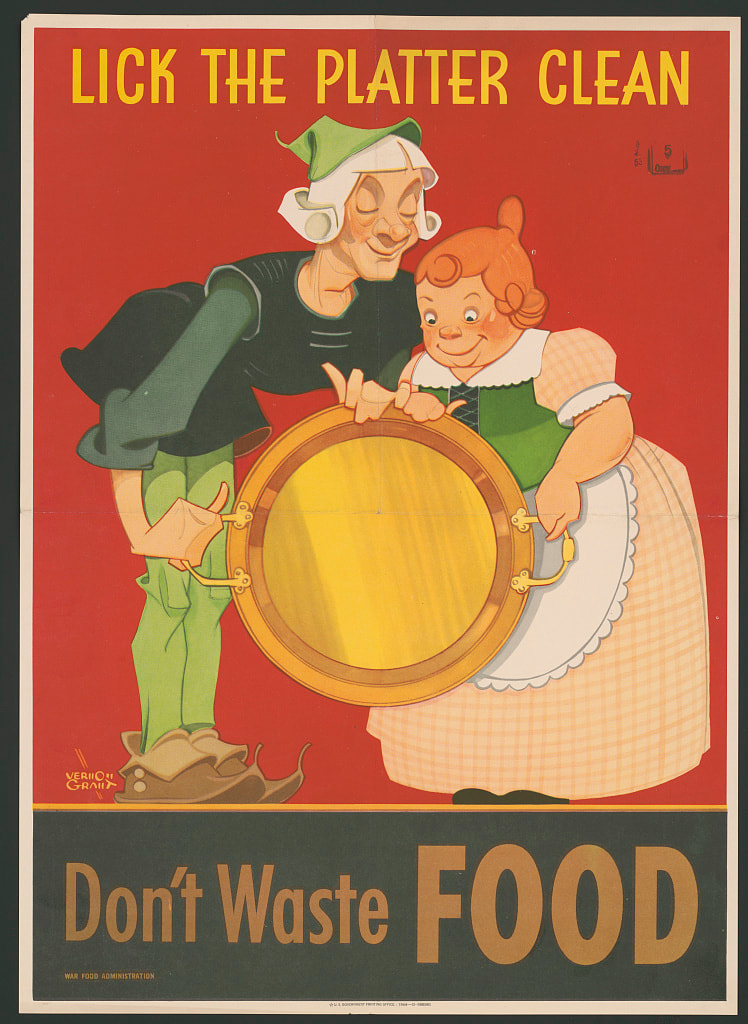
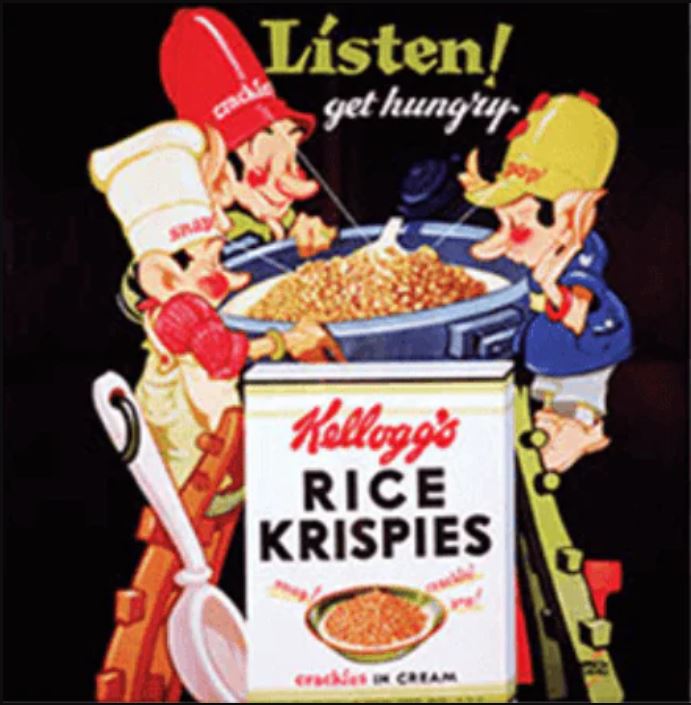
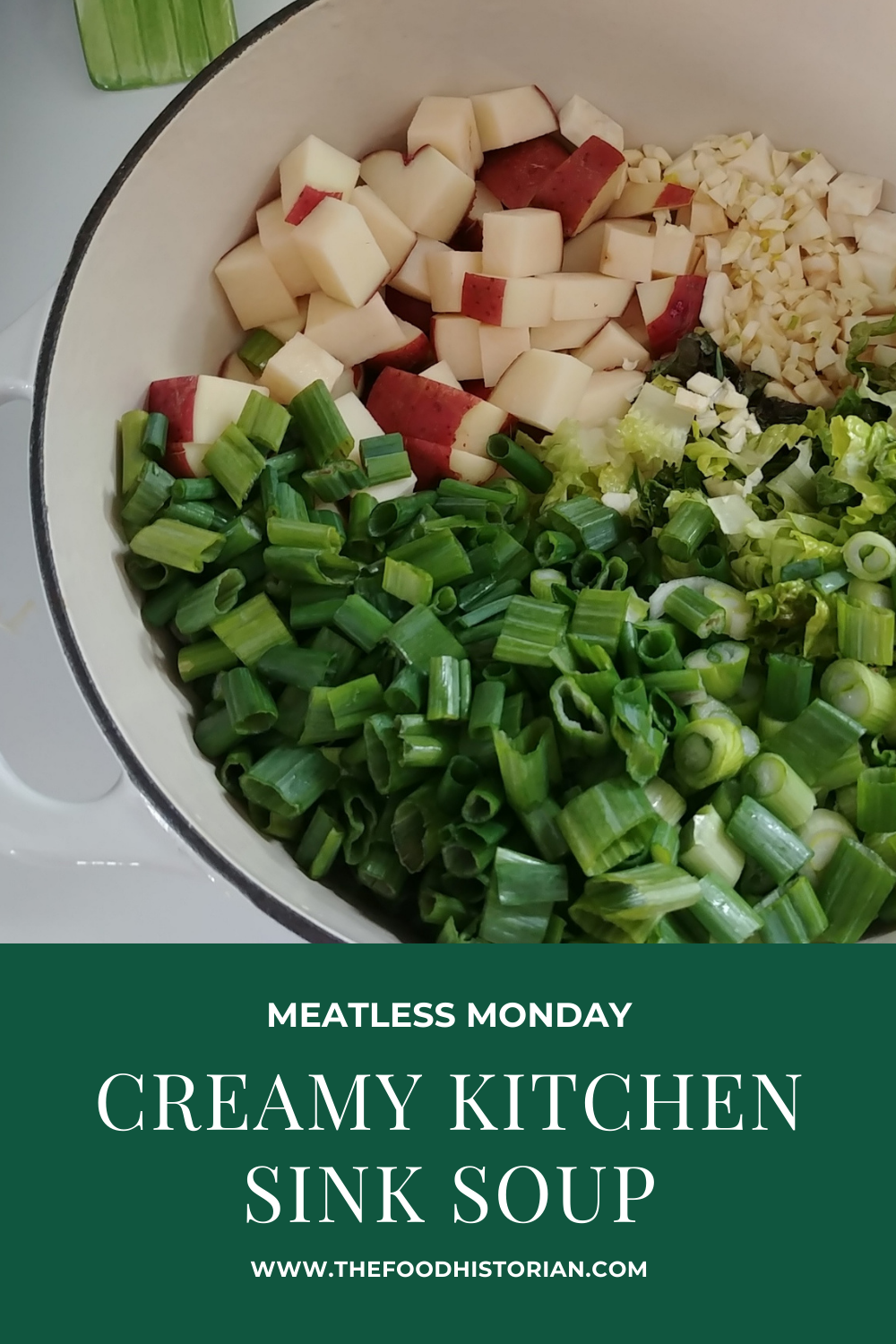
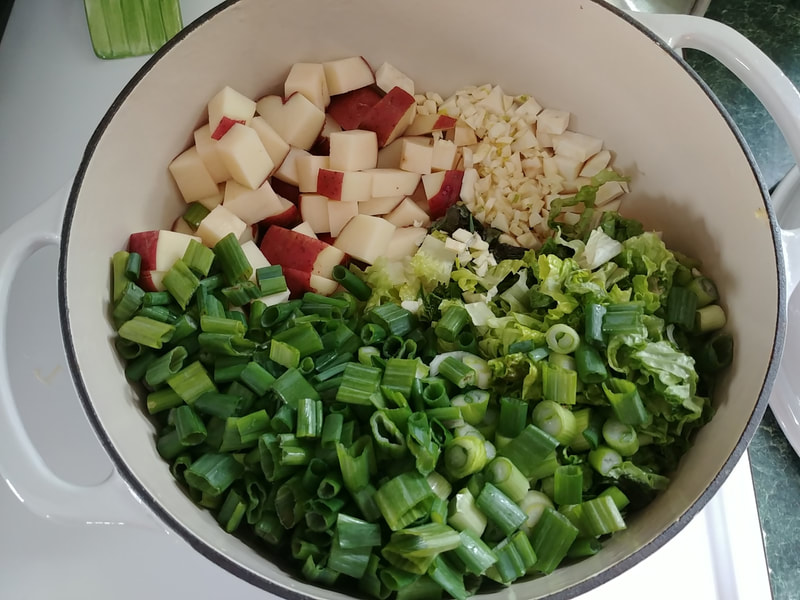
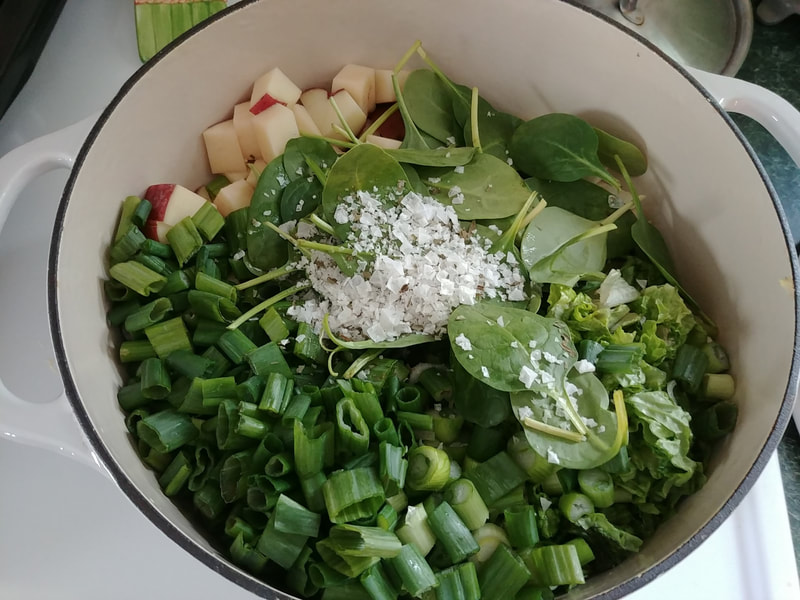
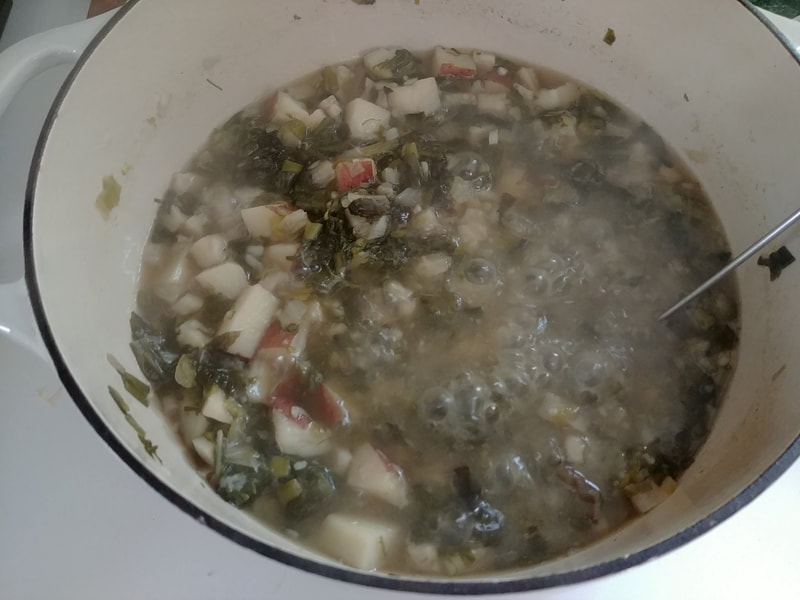
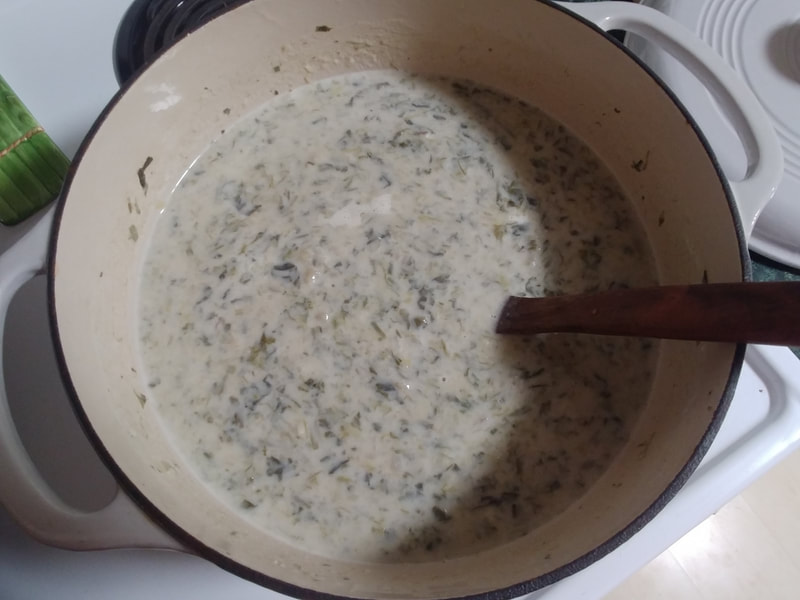
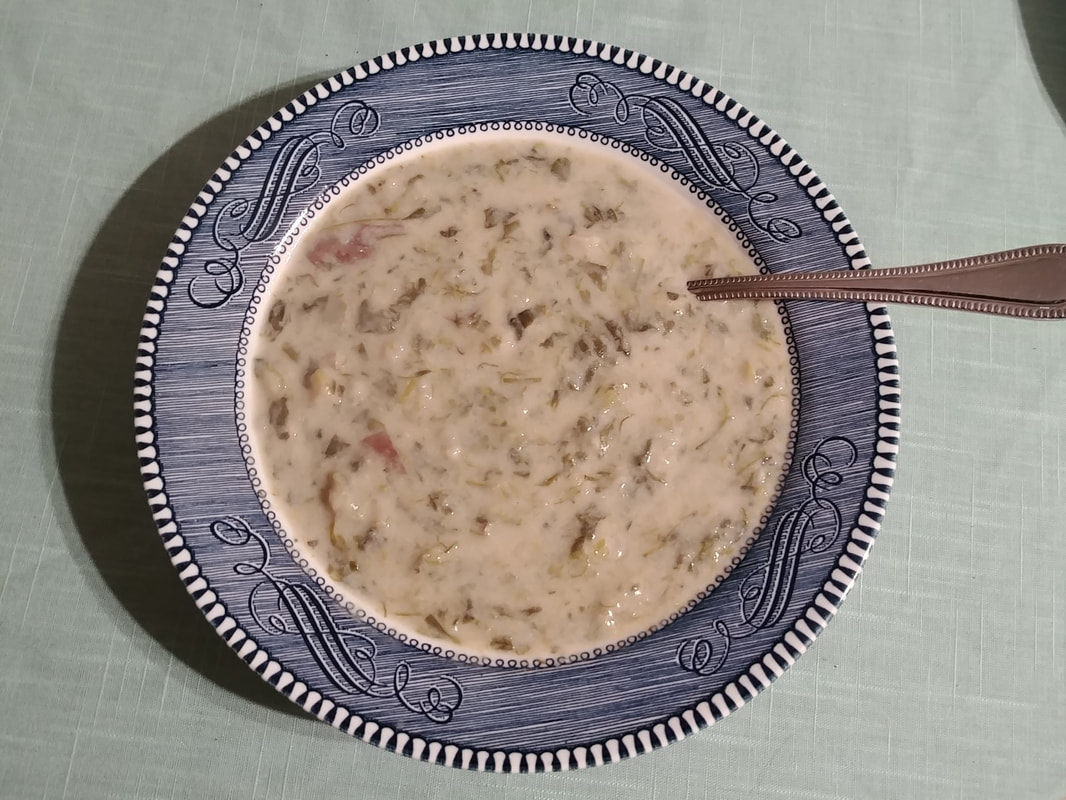
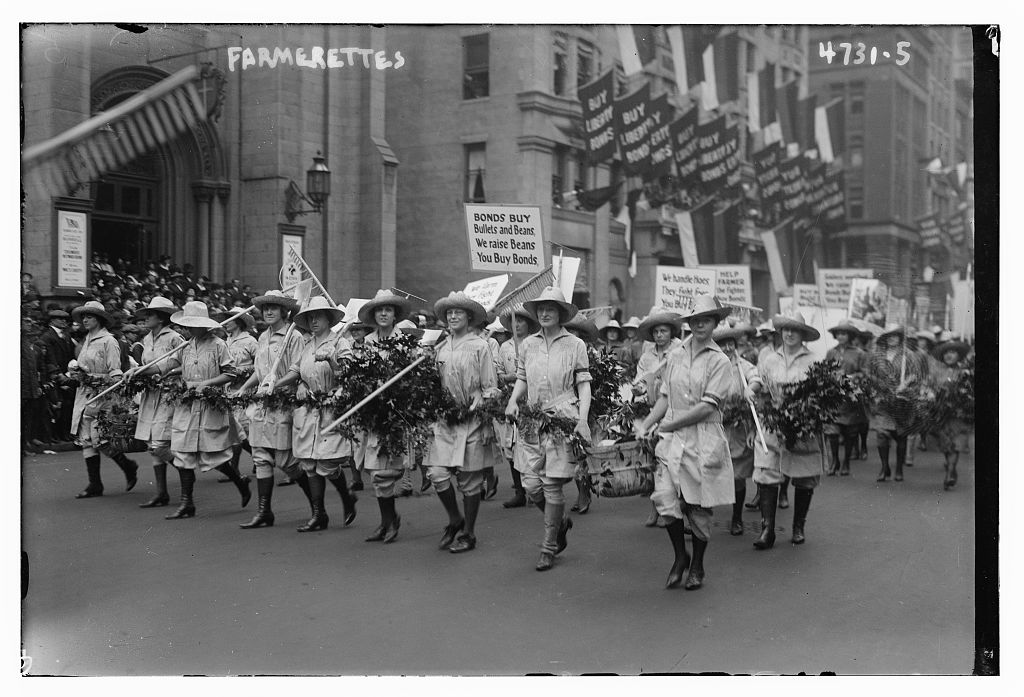
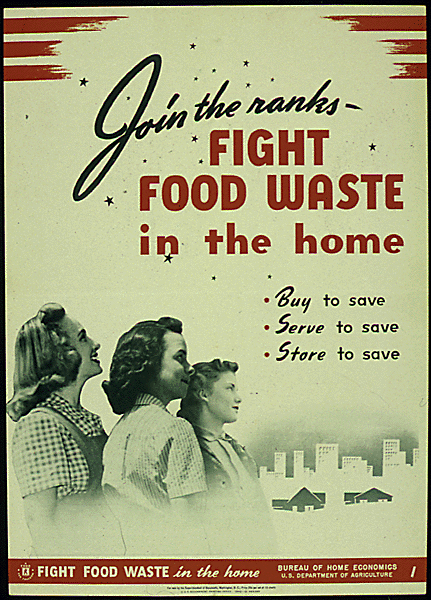
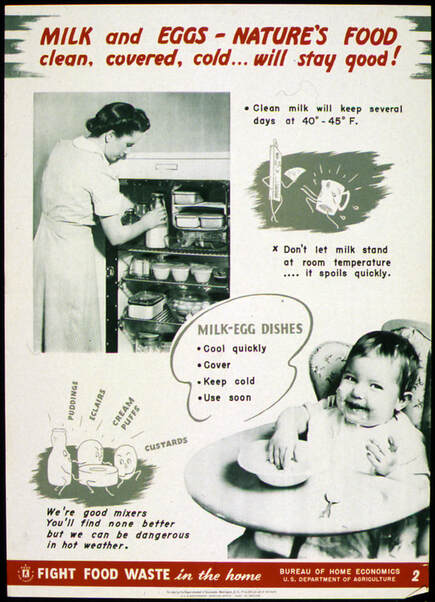
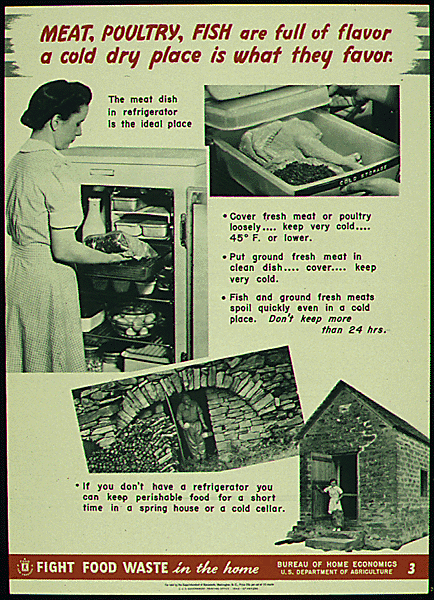
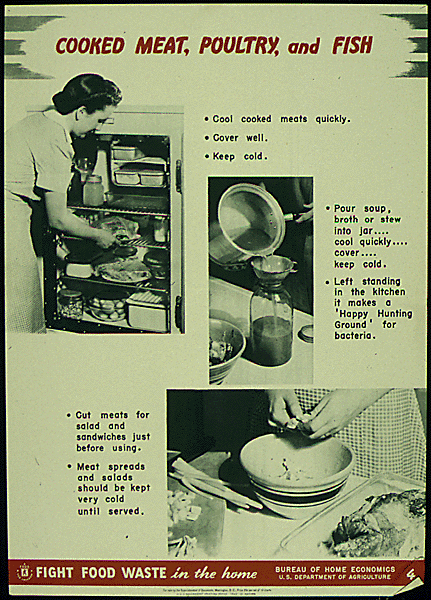
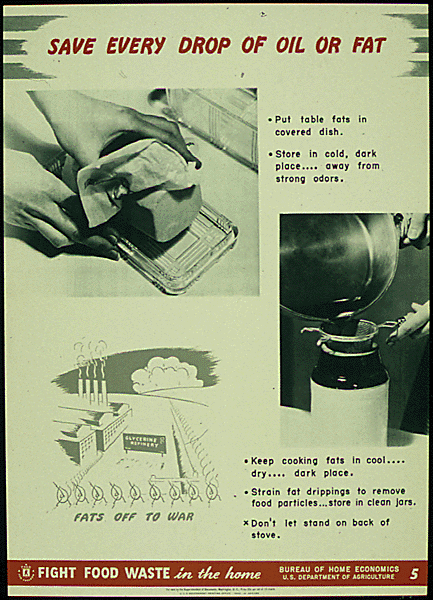
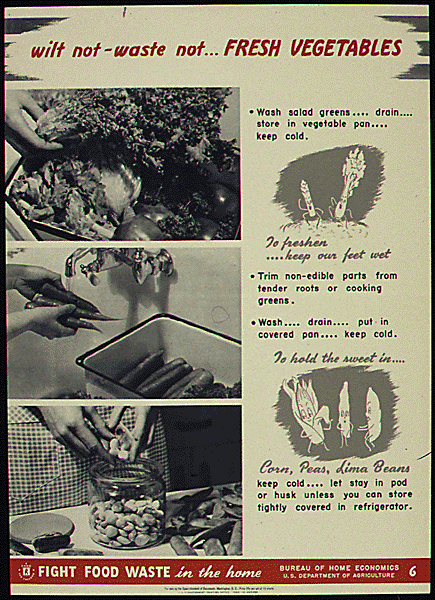
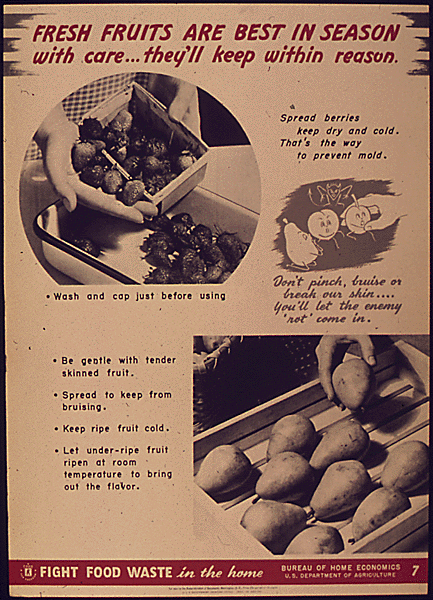
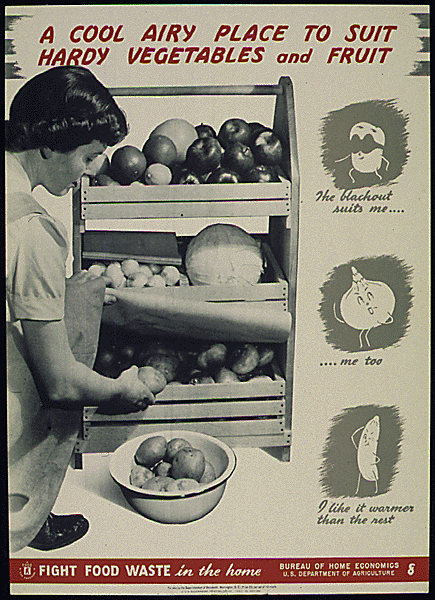
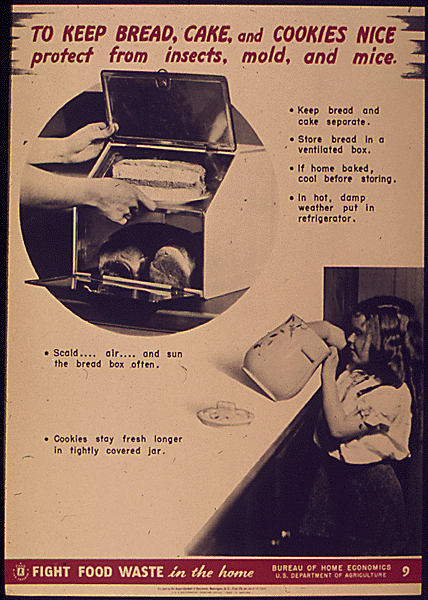
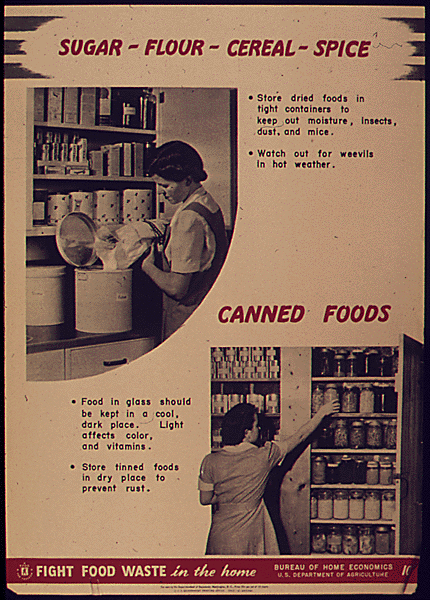
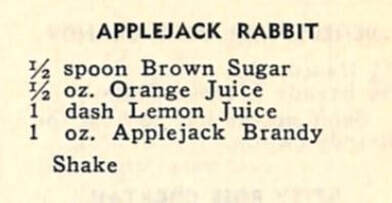
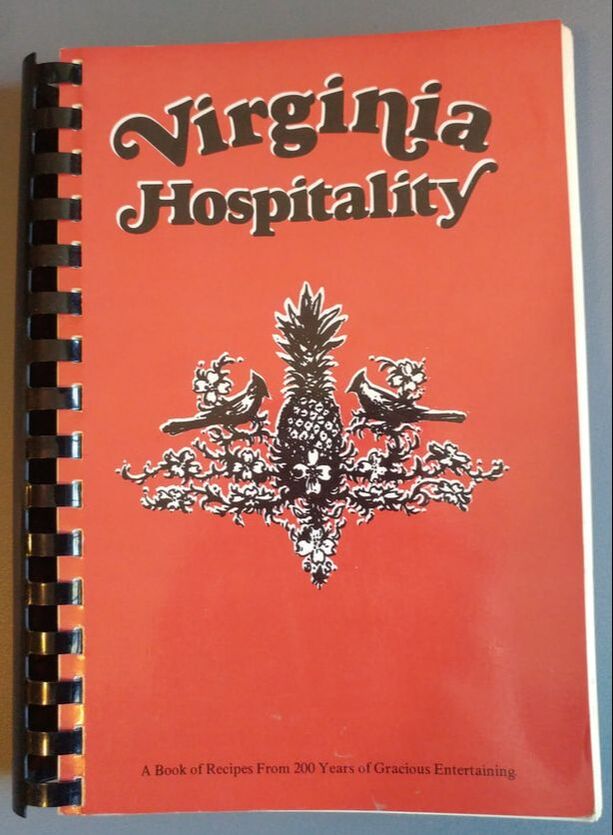

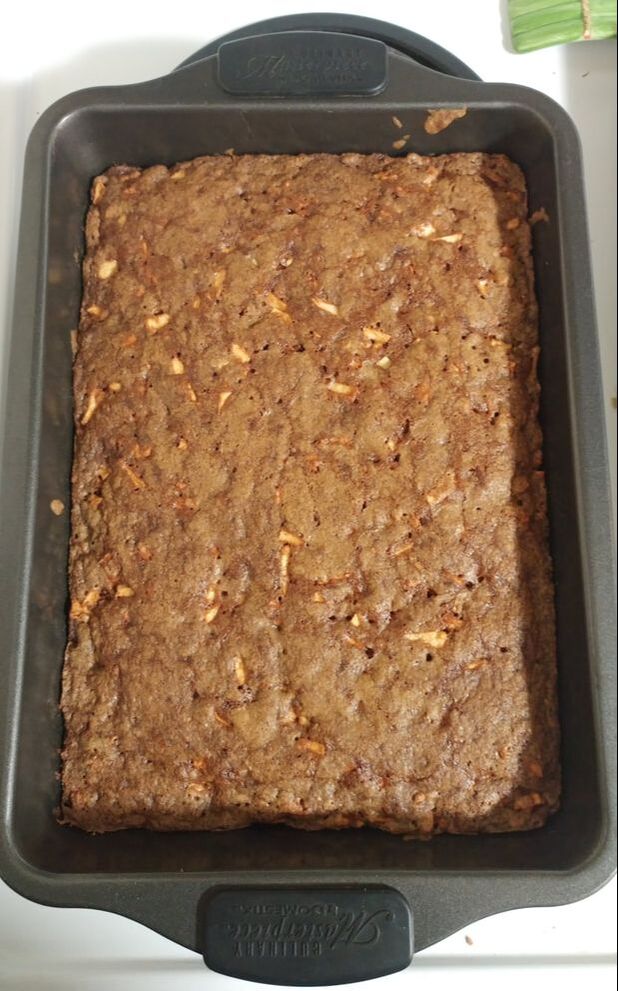
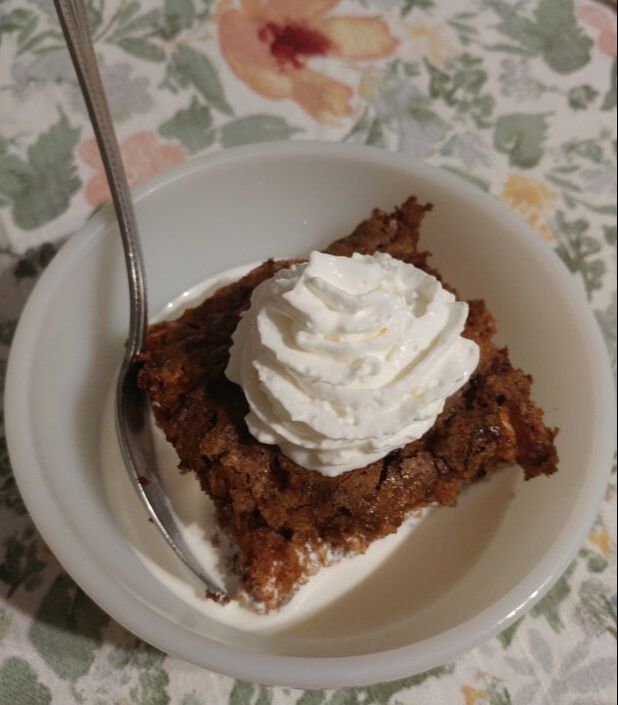
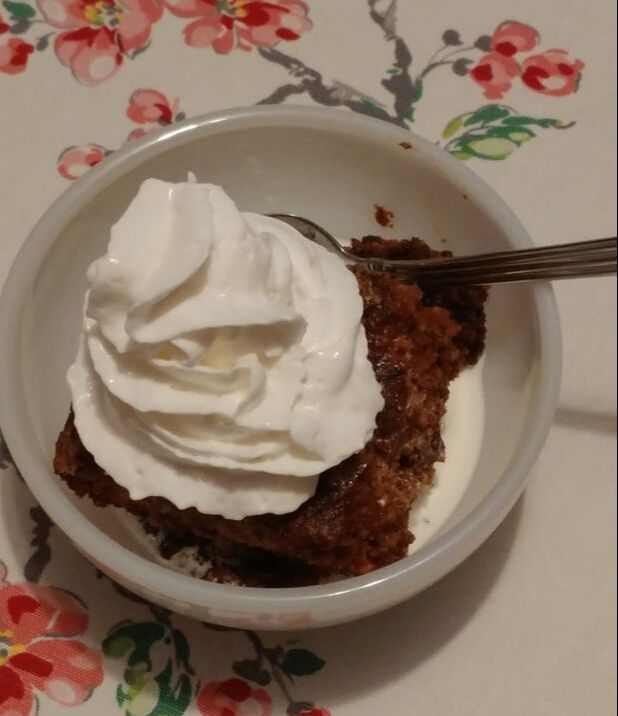
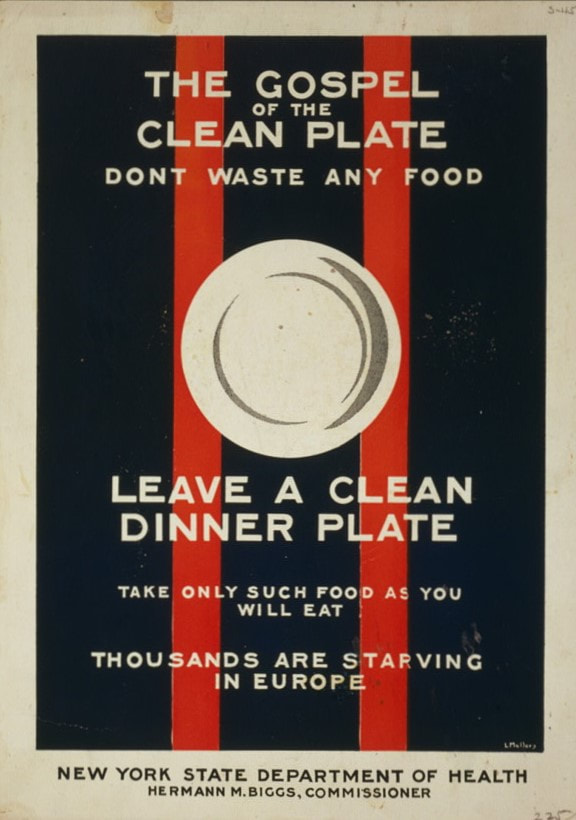


 RSS Feed
RSS Feed